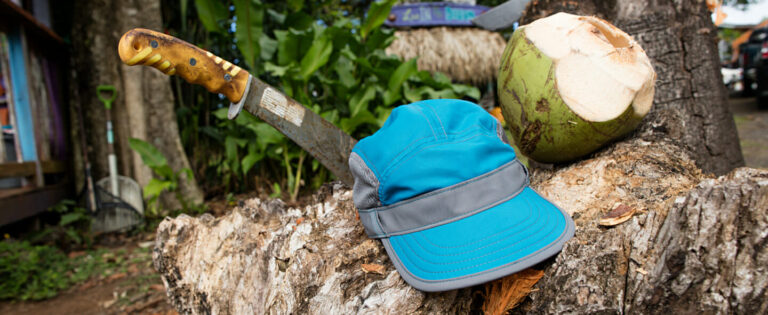
There are so many reasons to wash your walking backpack, trekking rucksack or mountaineering backpack, but none may be as pressing as those stinky shoulders straps that have absorbed so much sweat and sunscreen over the course of their career that the idea of wearing them makes you nauseated. Or, perhaps it’s all the dust and dirt that has accumulated on your trekking pack that has made you forget what colour the rucksack was when you bought it. Oh, and don’t even get me started on the interior and all the stuff that has leaked and spilled in there over the years…
Depending on just how dirty your backpack is, there are variety of complicated and less complicated ways to clean it. We recommend giving it a light cleaning on a regular basis so that you won’t have to put yourself through the rather complicated deep clean we just hinted at.
How to wash your backpack properly
Can you wash your backpack in the washing machine?
This question is asked again and again about dirty backpacks, but the answer remains the same: No! Absolutely not! A walking backpack or trekking rucksack should never ever be washed in the washing machine! Not at 30°C, not with cold water and not with mild detergents! Do not listen to all the so-called “specialists” on outdoor internet forums who recommend doing so. It’s a bad idea and we strongly advise against it. The best-case scenario would be for the coating or only parts of the backpack to get ruined. And the worst-case scenario? Well, the whole washing machine may decide to throw in the towel. The same thing goes for the dryer, too. Never tumble-dry your backpack.
Washing backpacks by hand
If your backpack gets really dirty from you cycling through mud or a long trek, there’s really no way around it: You’re going to have to give in and give it a deep clean. Once the backpack is dry from your trip, use a large brush to remove bigger chunks of dirt. Dried mud is pretty easy to remove for the most part. But, if you can’t get it all off, you can dampen the brush a bit and that should do the trick. As for all the usual debris that accumulates on the interior, just open up your pack, turn it on its head and pat it out. If you’d prefer to be a bit more thorough, you can use a vacuum as well. For anything that just refuses to budge, you can use a damp sponge cloth and wipe it off.
Textile detergent
If wiping the dirt off doesn’t result in the degree of cleanliness you’re looking for or you’re pack just hasn’t been properly cleaned in a while, you’ll have to resort to special textile detergent suitable for backpacks. Why? Well, standard detergent is usually too aggressive for backpacks and can damage the material. Textile detergent can be used in two different ways: either for cleaning individual parts or for washing the entire backpack. To do the former, mix the detergent with lukewarm water (as specified by the instruction manual) and clean the dirty areas with a sponge or brush. For the latter, soak the backpack in a bathtub or something similar and scrub the really dirty areas with a brush. If your pack has a removable frame, make sure to remove it beforehand.
If you notice a leak in one of your bottles, it’s important to act quickly and soak up the liquid with a sponge or cloth and clean the affected area. Depending on what kind of liquid it is, it could leave ugly stains on your pack. That’s why it’s always a good idea to soak the backpack and clean it as described above. If you let something like tea or coffee dry, it can be really difficult to clean. The same goes for juices and other “sticky” refreshments we love to drink.
A deep clean or individual parts?

Some hill walkers and trekkers never clean their packs, while other do so one time a year, while others clean them as needed. It obviously depends on how often you use your pack and what you use it for. Hill walkers and hikers often have dirty shoulder straps, hip belts and back panels. These parts of the backpack are often stained because of sweat and sunscreen and, as you can imagine, start to smell pretty bad after a while. To counteract this, wash the straps and the back of your pack using mild detergent and give it a good rinse.
Trekking rucksacks or cycling backpacks tend to be covered with the dirt and mud we kicked up along the way. All you have to do to get rid of this is simply wipe off the outside. But, even if you do so on a regular basis, it’s still important to give it a proper clean once a year at the very least. If you only use your pack in certain seasons, proper storage is paramount. The rucksack should be stored in a dry and well-ventilated place. If you store your pack in a musty cellar or don’t give it time to dry before packing it away for the year, it could get mouldy and develop that disgusting mouldy smell.
If tea or soup spills in your pack while you’re out in the hills, wipe it up as best you can and dry the backpack using tissues or a back-up T-shirt. If you’re just doing a day trip, be sure to soak and wash the backpack the same night. If you’re out on a multi-day backpacking trip, just use mild soap and water and that should do it for the time being. You can give it a deep clean when you get home.
How to dry your backpack after washing it by hand
After soaking and scrubbing, the backpack must be thoroughly rinsed out with clean water. The best way to do this is to use a handheld showerhead and lukewarm water. You can do it in the tub as well. Any dirt or soapy residue needs to be rinsed off well, and be sure to wring out any foam parts on the backpack to extract any residue there as well.
Then hang it up upside down to dry. Make sure to leave all the pockets open and compartments unzipped so that any water can escape. If possible, hang the backpack up outside in the shade. That way, you can be certain that it will dry properly. Plus, it will smell nice and fresh and the sun won’t damage the material. By the way, the best conditions for drying your backpack are warm and windy.
Depending on the outside temperature and the kind of pack you have, the drying process can take a while. If small pockets or hard-to-access areas just don’t want to dry, you can use a absorbent cloth or newspaper to speed up the process. Just stuff the pockets with newspaper and they’ll absorb a good amount of the water. Using a blow dryer to dry your backpack is just as unadvisable as putting it on the radiator to dry. Both could damage the material and even ruin the backpack completely.
How to care for your backpack after washing

Depending on how thorough a cleaning your pack had to undergo, it’s often wise to use silicone spray lubricant on the zips to make them run more smoothly. Plus, you should proof the outside of the backpack from time to time so that it can fend off rain and dirt. That way, you won’t always have to use a rain cover. This will stop the fabric from becoming saturated with water, which would otherwise make the backpack heavier than it needs to be.
Another advantage to reproofing your backpack is that it will fend off dirt. This means you won’t have to wash it as often, which will, in turn, increase the lifespan of your pack as well. After explicitly stating that backpacks should never be machine-washed or tumble-dried, we’d like to give you another important tip: Never iron your backpack after washing it (yes, people do this)! The material is too sensitive for that.
When inspecting the zips and reproofing the outer fabric, check the backpack for minor damage around the seams and material. The earlier you discover the damage, the faster and easier it is to repair it. Obviously, repairs are much more difficult to make when you’re out adventuring.
How to care for zips, hook-and-loop fasteners and the like
All fasteners, zips and adjustable straps on a pack are exposed to a lot of wear and tear. That’s why, it’s important to freshen them up every once in a while.
Zips, for example, can get extremely dirty, making them nearly impossible to use. To get them up and running again, apply a silicone spray lubricant to the zip and/or the slider. Then, zip it open and closed a few times so that the lubricant is distributed evenly. The zip will run much more smoothly afterwards. However, be careful not to apply too much. Allow it to set and then wipe the excess lubricant off with a clean towel.
A lot of dust accumulates on hook-and-loop fasteners, so these, too, need to be cleaned. The more dust and dirt particles there are, the worse it’ll fasten. Fortunately, there’s a quick fix for this as well. All you have to do is use a small brush (a toothbrush will do fine) to remove all the little particles from the material.
After a while, you may even notice your straps and other adjusters aren’t working as well or have stopped working altogether, too. The solution? A long bath in lukewarm water! This will loosen any dirt firmly embedded in the webbing and bring them back to life!
Reproofing your backpack
Backpacks are rarely waterproof, so it’s a good idea to protect the contents with a rain cover in bad weather. Still, many backpacks have been treated with a water repellent coating to make them impervious to dirt and water. Unfortunately, this layer of protection will gradually lose its effectiveness over time from use. Fortunately, though, it doesn’t have to stay that way. Using a spray-on reproofer, you can reactivate the protective coating in a flash! However, this should only be applied to areas away from the carrying system, as people with sensitive skin may have an allergic reaction.
How to store your backpack properly
Properly storing your backpack is an extremely important contributing factor to its longevity. You should never fold or crush it. Instead, store your backpack empty in a dark, well-ventilated space. Drastic changes in temperature – like those in a car or in a poorly insulated attic – can damage he material and cause it to age prematurely. If you carelessly shove your pack in your wardrobe with all your other gear, the load could deform the suspension system, rendering the backpack useless!




